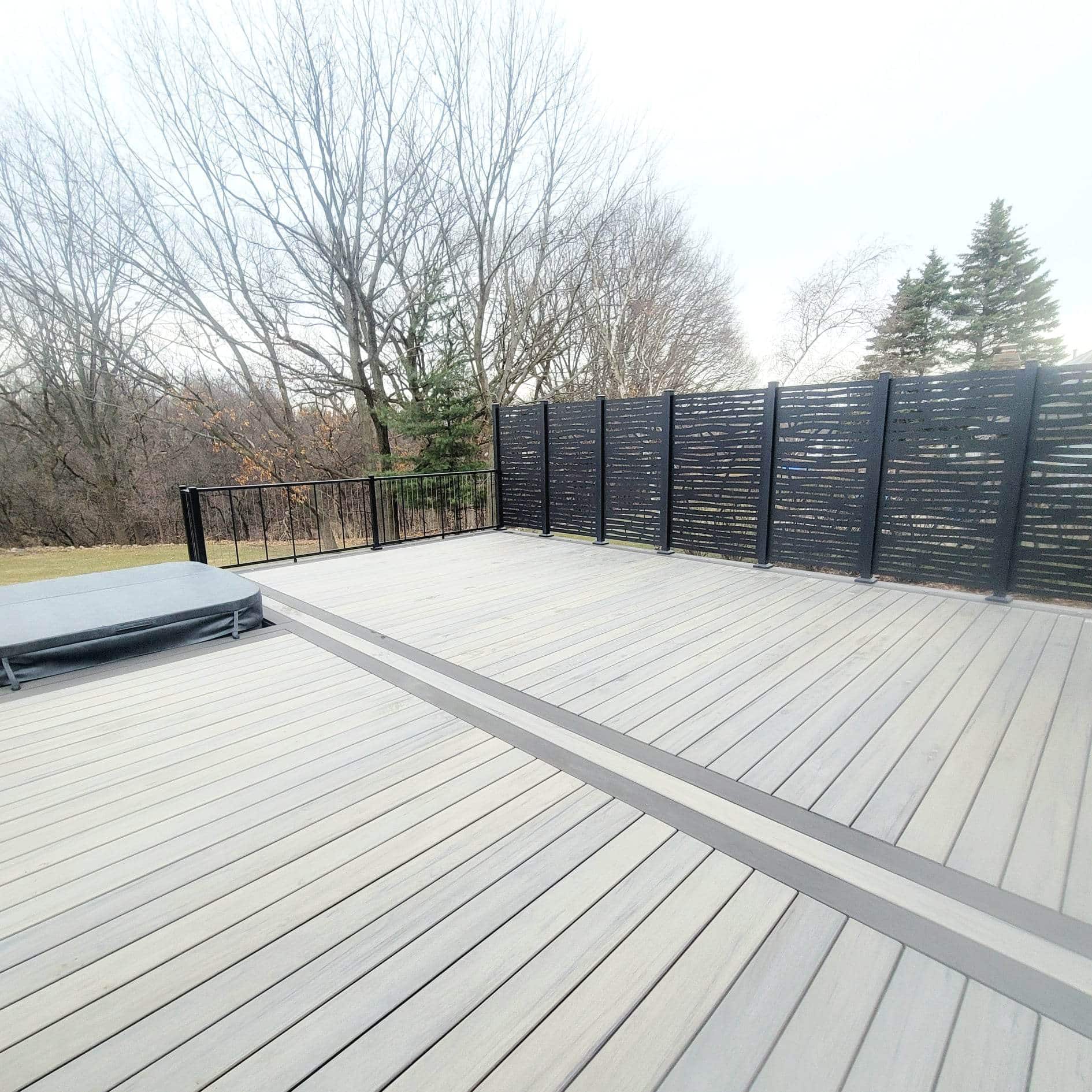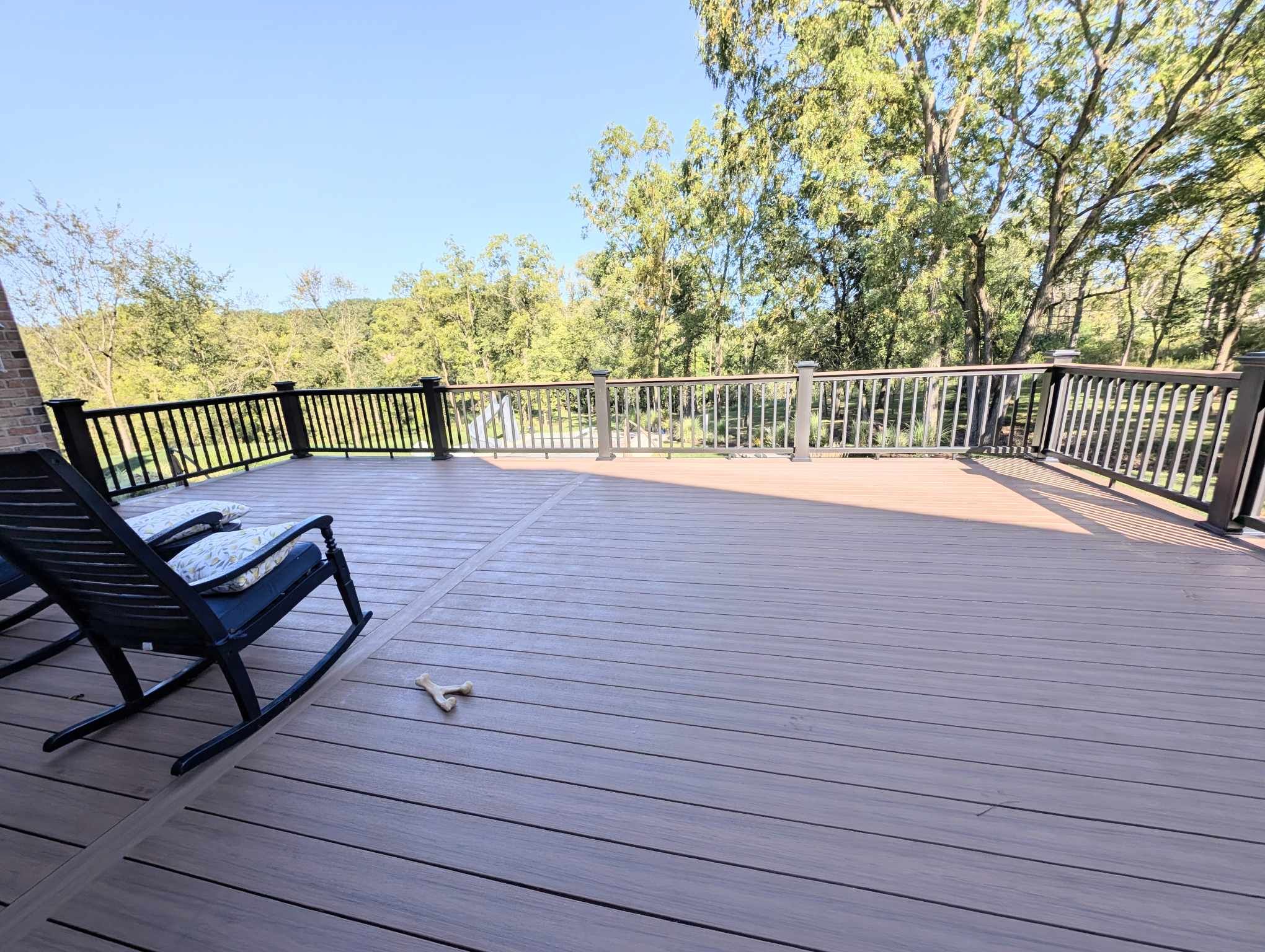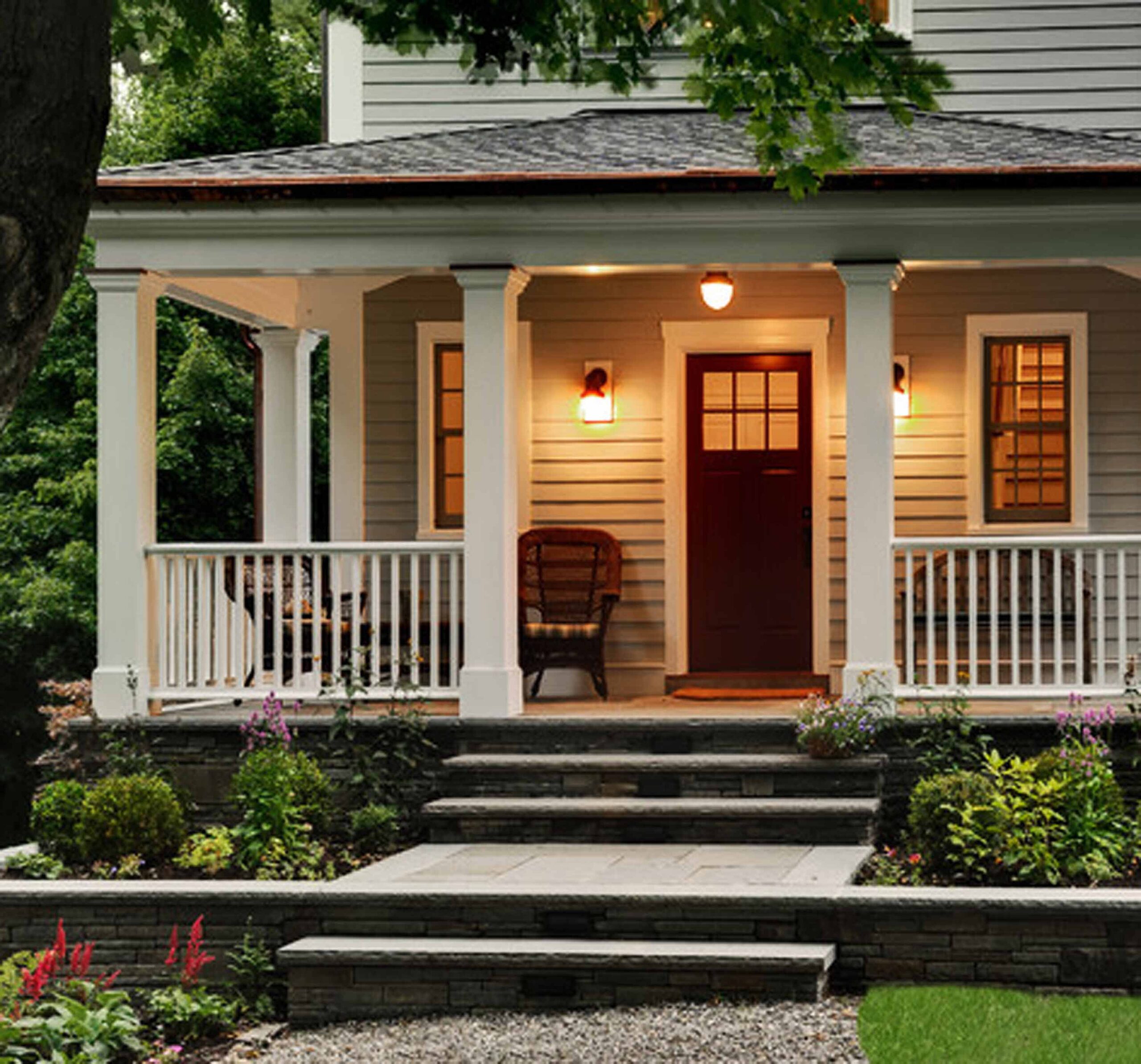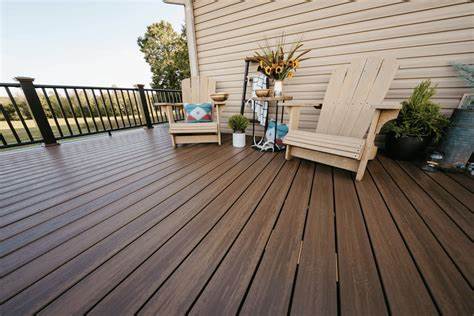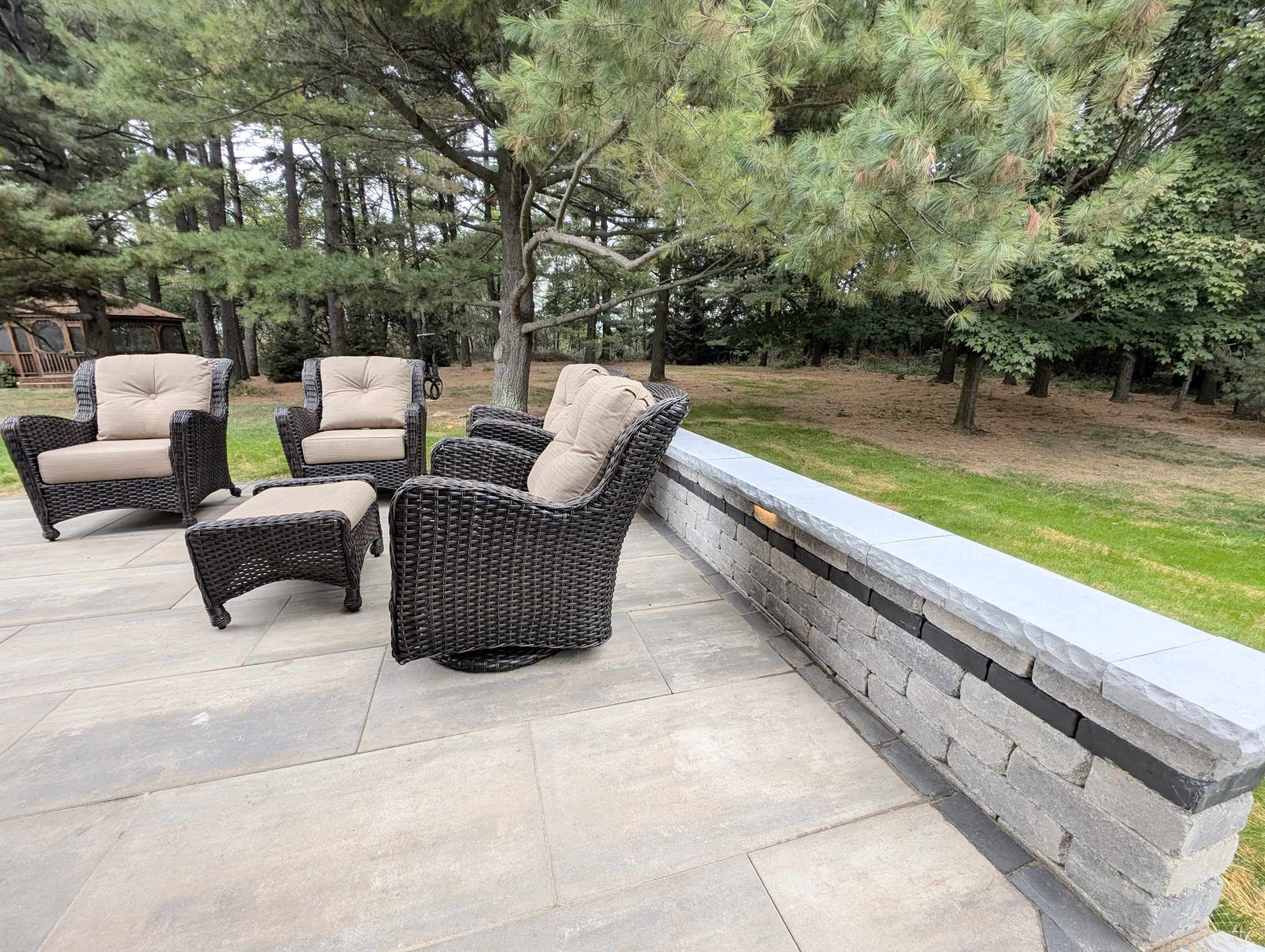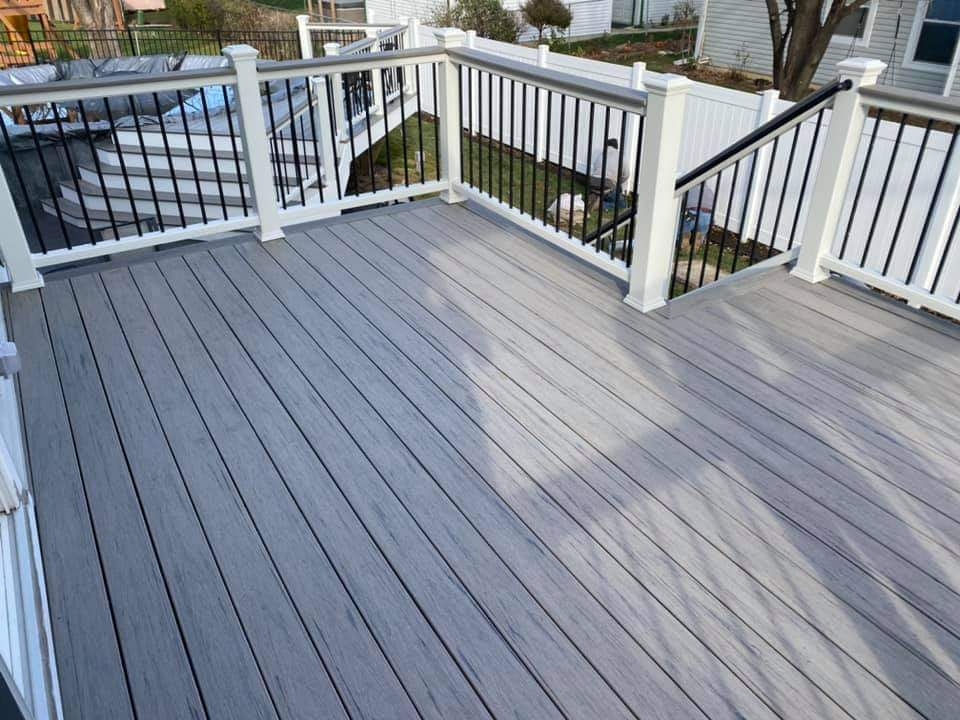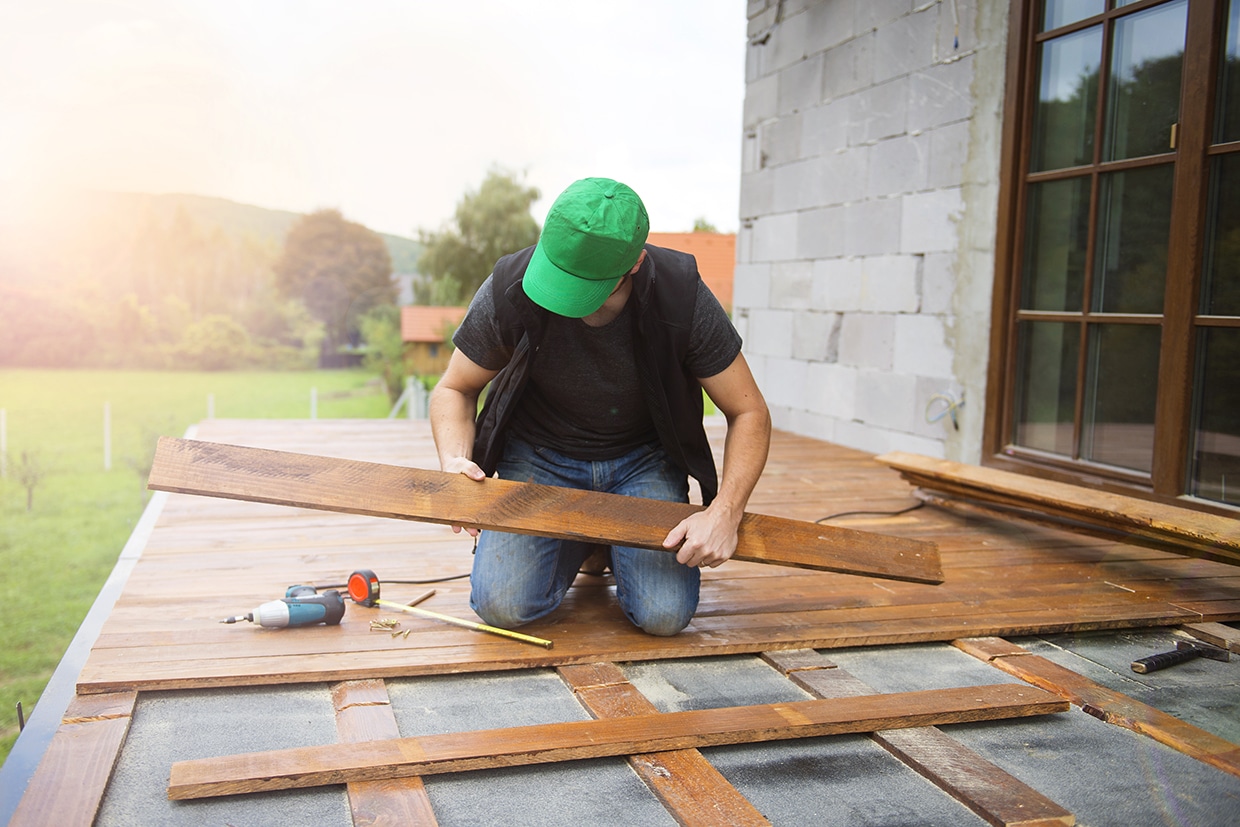Deck Pricing Factors And What Drives The Cost Up
Decks are an excellent addition to any home, providing a beautiful outdoor space for relaxation, entertainment and family time. However, building a deck can be a significant investment, and the cost can quickly add up depending on various factors. Understanding what influences the cost of a deck can help property owners make informed decisions about their project, budget accordingly, and ultimately get the best value for money. Here, we’ll explore how the complexity of a deck design can influence pricing and what elements drive the cost up.
Size
The size of your deck, of course, will be the biggest factor in cost. An 800-square-foot deck will cost more in labor and material than a 300-square-foot one. That said, calculating the overall price is not as straightforward as just a price per square foot.
For example, a 10’x10′ deck will be more expensive per sq ft than a 30’x10′ price per sq ft. This is because of production, efficiency and the components to build the deck.
The overall size matters, as well as how far out your deck will be. Building codes have maximum sizing before lumber sizing is required to increase and/or add additional beams.
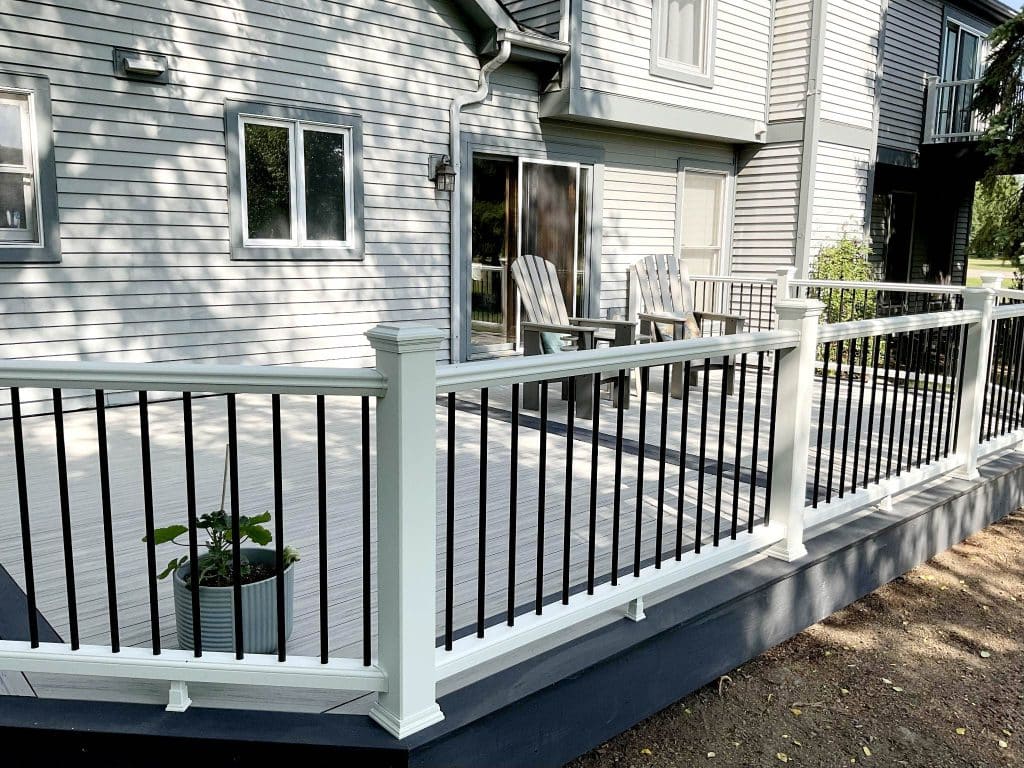
Material choices
Like the size of your deck, material choice also has a large impact on costs. Common choices for decking would be Green treated wood, Cedar, Composite and IPE decking.
Green treated wood is going to be your lowest cost upfront. However, over the life span of the deck, with maintenance, treated wood can cost the same or more than a Composite deck.
Cedar wood is great for those who don’t mind maintaining and like the appearance of a natural wood deck. Cedar decking is similar in cost to an entry-level composite.
Composite decking is gaining more and more popularity due to low maintenance and longevity. Composite comes in different colors, grain patterns, and grades of decking, from entry level to a premium board. Composite decking typically is 20-40% more than green treated lumber upfront.
IPE decking is a hardwood material. IPE is similar in cost to a premium composite but still requires maintenance. However, it’s as durable as composite but with a greater lifespan. IPE is not as common because of costs and availability but is great for homeowners that want to invest in wood decking.
With decking selections, there also comes railing selections. Railing can be just as much as the deck boards themselves. If you have a wide deck, railing materials will dramatically increase the overall cost. With many choices between aluminum and composite railing, aluminum railing is becoming very popular with its durability and modern appeal, whereas in comparison, composite railing is easily customizable with combinations of color and styles.
Stair design
One of the factors that affect the cost of a deck most is stair design. Naturally, the cost will increase depending on the number of steps; the higher number of steps, the higher the material and labor costs. Some staircases cost as much or more than the deck itself. More complex designs, such as stairs with a landing or cascading stairs, will increase the overall cost but can add style and utility to any deck.
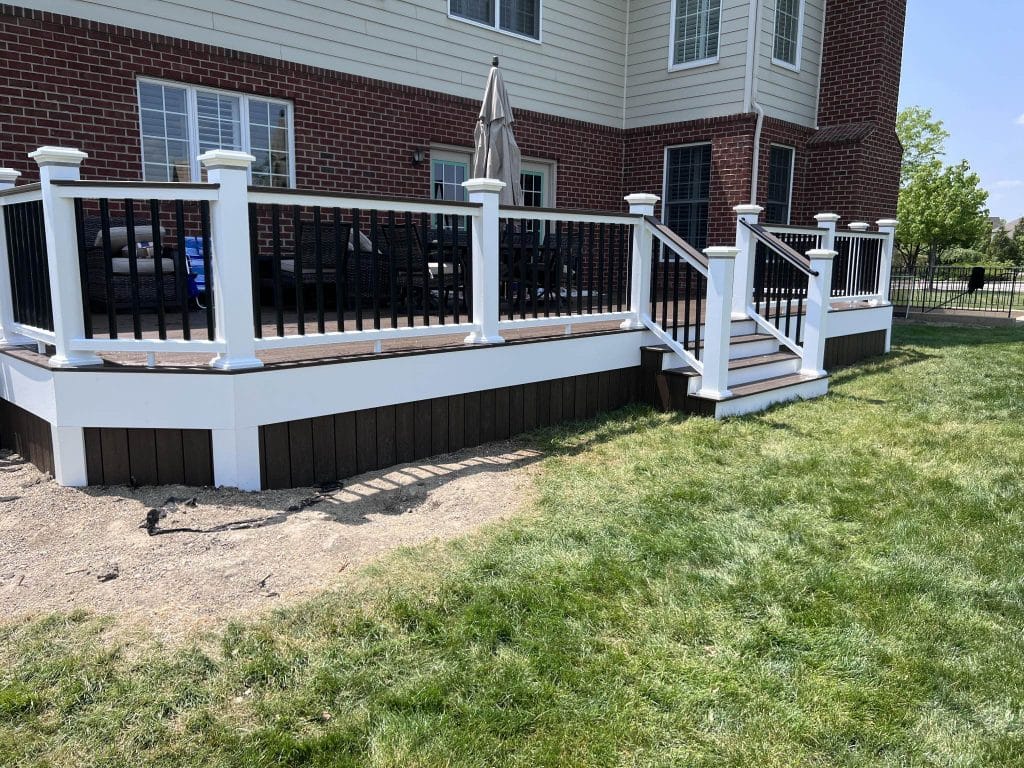
Height
No two decks are the same, but decks generally fall into two main types when it comes to height:
- Ground-level deck. A ground-level deck is generally attached to a house where the first floor sits at ground level with one or two steps. These are generally the most cost-effective.
- Raised deck. This type sits 4-10 feet off the ground, with railings and stairs. This is commonly seen in homes with English and walkout basements. Generally, these cost more than ground-level decks because of the extra materials required.
The higher the deck, the more labor invasive it can be, additional equipment required, larger sized framing and additional amount of stairs and components that add additional cost.
Deck patterns or inlays
A “deck inlay” is a design that involves using different installation angles and deck boards. This technique allows homeowners to customize their outdoor space and create a focal point for their deck design.
Deck inlays can be geometric shapes or patterns that offer a unique way to add personality and visual interest to a deck.
Of course, more complex designs, especially if they use a range of different materials and finishes, will influence the price.
Built-in seating
Built-in seating on a deck offers several benefits. First, it provides a convenient and comfortable place to sit and relax while enjoying the outdoors. It also eliminates the need for additional seating furniture, which can be bulky and take up valuable deck space.
In addition, built-in seating can help to define specific areas of the deck and add to the overall design aesthetic.
Generally, adding built-in seating to a deck will increase the project’s total cost. However, this should be weighed up against the added value and convenience it provides.
Deck and accent lighting
Adding deck and accent lighting can provide several benefits. It can enhance the safety and security of the deck area by providing increased visibility in low-light conditions. It can also extend the use of the deck into the evening hours.
The cost of installing deck and accent lighting can vary widely, depending on a variety of factors:
- The size of the deck. The more lights needed, the higher the installation cost will be. The size of the deck and the specific areas that must be illuminated will influence the number of fittings required.
- Type of lights. The type of light, and the complexity of their installation, will also affect the cost. For example, installing post cap lights, under rail lights, riser lights, post mount lights and in-deck lights are some of the options, with post cap lights being the most expensive.
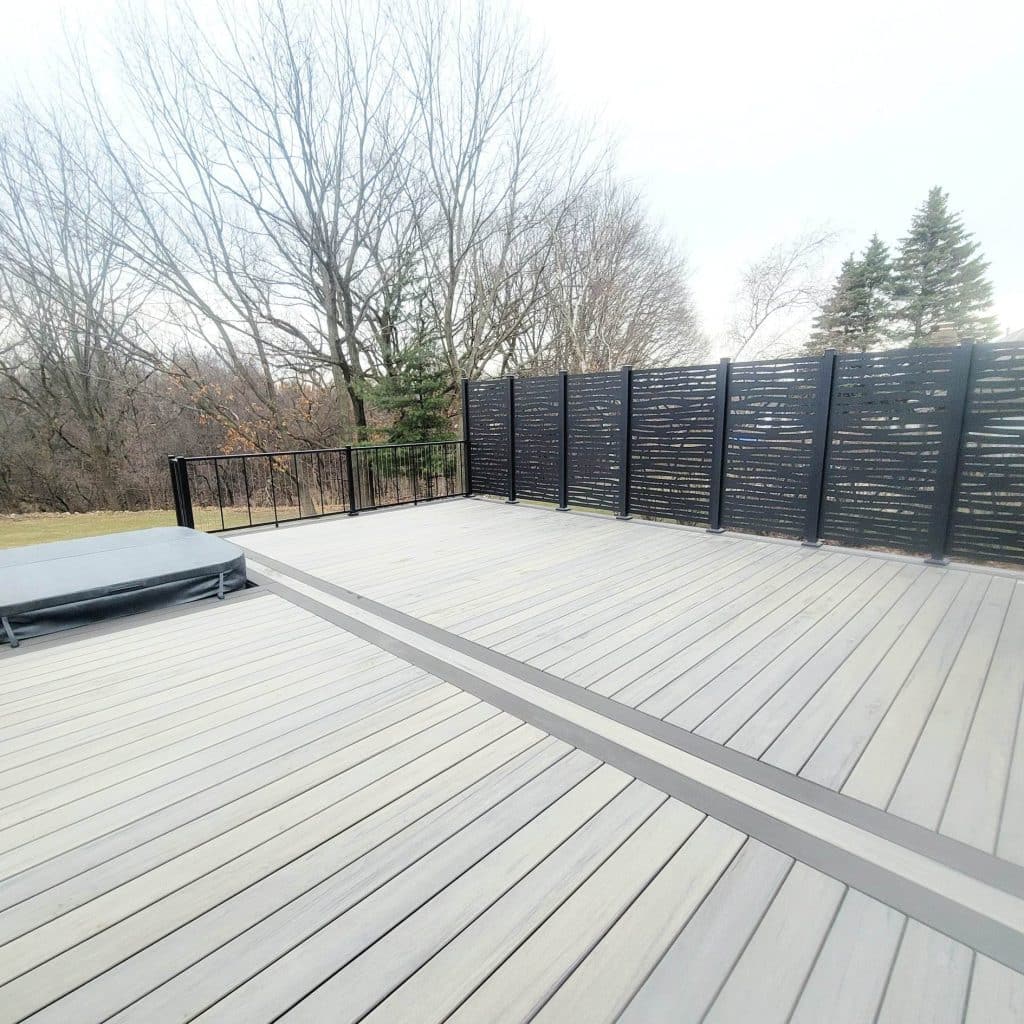
Finished underdecking and dryspace
Adding finished underdecking and dryspace to a deck typically involves installing a drainage system and gutter beneath the deck. With deck drainage systems, there are different options with different price points and finishes.
These can add significant extra cost but also several benefits, including increased outdoor living space, protection from the elements, enhanced aesthetics and a potential increase in a property’s value.
Comparing companies to hire
You will find every company charges differently due to their structure, knowledge, skill set, installation practices and overheads.
Handyman or independent contractors will cost less but may take longer to finish the project. Some will require you to get all the materials and might not know the proper building practices or specifications.
Deck building companies are where we fall in. We stay up to date on all training and building specifications. We take care of all the permitting and materials and ensure your deck will last a lifetime.
General contractors are great if you are trying to tackle more than one project at the same time or that might integrate within each other in planning and building. This route will be more expensive but gives you a better scheduling ability for multiple projects.
Design a dream deck with Decked Out Builders
A deck is a terrific way to gain more usable space. However, many factors must be considered when designing a deck to avoid the cost spiraling out of control.
Luckily, we have the experience and know-how at Decked Out Builders and can help homeowners get the most out of their new deck project.
To discuss all the options, get in touch! Deck design is our specialty!
https://www.google.com/maps?cid=2300364325239903716


